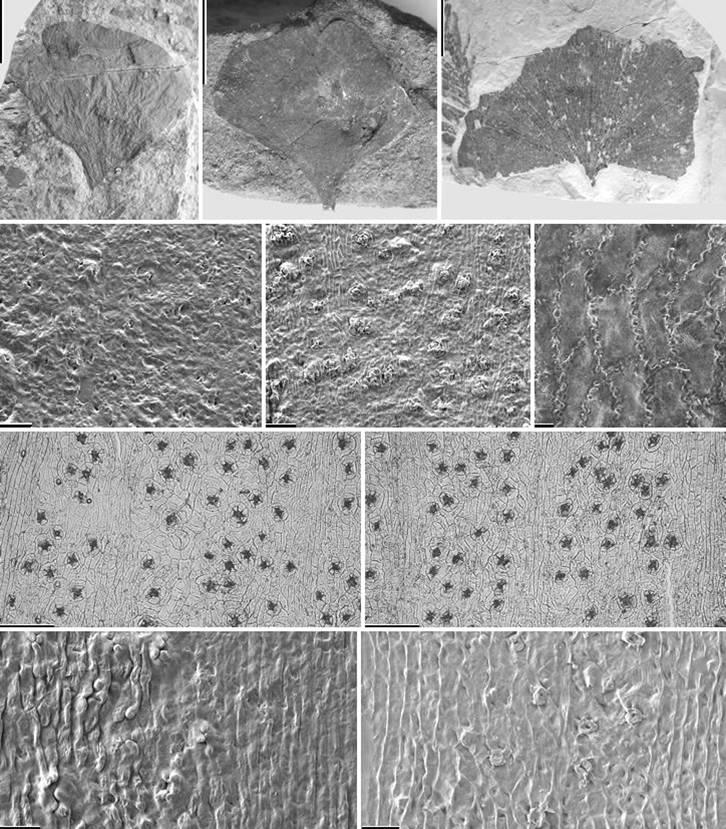
The living fossil Ginkgo, a relict of a once dominant gymnosperm,existed and flourished early in the Mesozoic, but only a vagueoutline of its evolutionary history in the Tertiary has been unveiled. Recently Doctor Quan Cheng et al from Nanjing Institute of Geology and Palaeontology Chinese Academy of Sciences and Jilin University described a new species, Ginkgo jiayinensis sp. nov. and used it to reconstructed paleo-CO2 of Tertiary.
Ginkgo jiayinensis was found from the Wuyun Formation of Jiayin, China, which is another well-established Tertiary species based on leaf fossils besides G. adiantoides. The most remarkable feature of the new species is the amphistomatic leaves, likely representing a distinct evolutionary line of the genus in this time interval. Ginkgo jiayinensis is similar to the co-occurring G. adiantoides and extant G. biloba in the lower cuticle, but the two latter species clearly differ in having hypostomatic leaves. Ginkgo bilobais used as the nearest living equivalent (NLE) species for both G. adiantoides and G. jiayinensis in reconstructing paleo-CO2,as it has been used for other fossil species with either hypostomaticor amphistomatic leaves. The two Tertiary species are almost identical in stomatal index in abaxial cuticles (8.4 and 8.5,respectively), showing no strong differences in response toatmospheric CO2. Amphistomatic G. jiayinensis would therefore have used a different ecological strategy from that of G. adiantoides of the same bed.
The study has been published in American Journal of Botany.
Quan C., Sun G., and Zhou Z. 2010. A new Tertiary Ginkgo (Ginkgoaceae) from the Wuyun Formation of Jiayin, Heilongjiang, northeastern China and its paleoenvironmental implications. American Journal of Botany, 97(3): 446-457.
Download:
